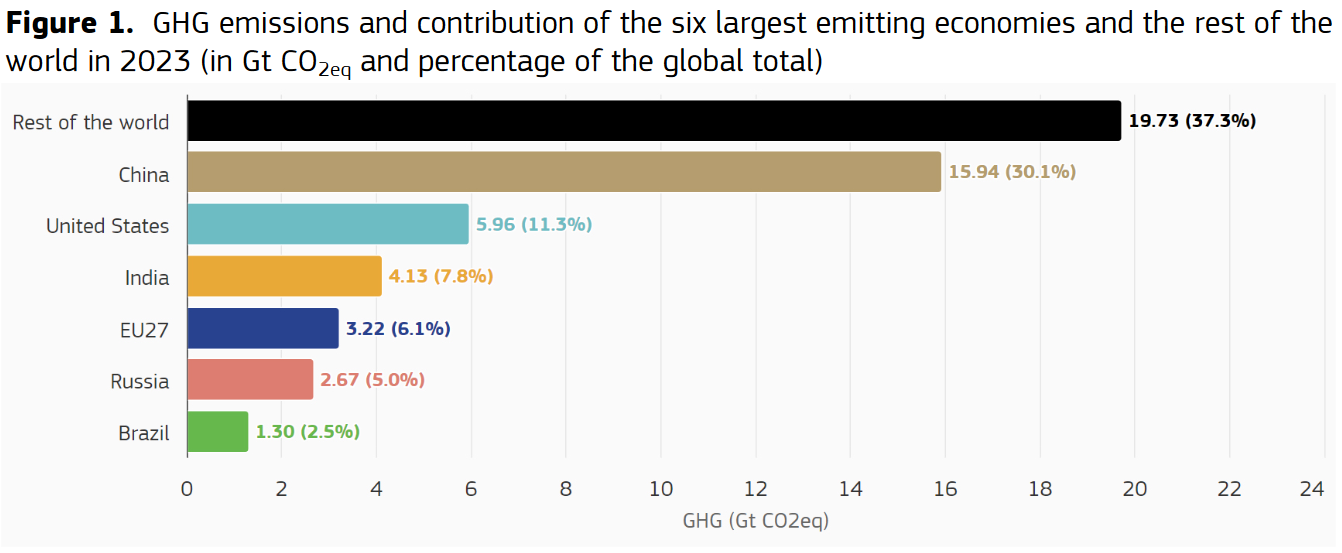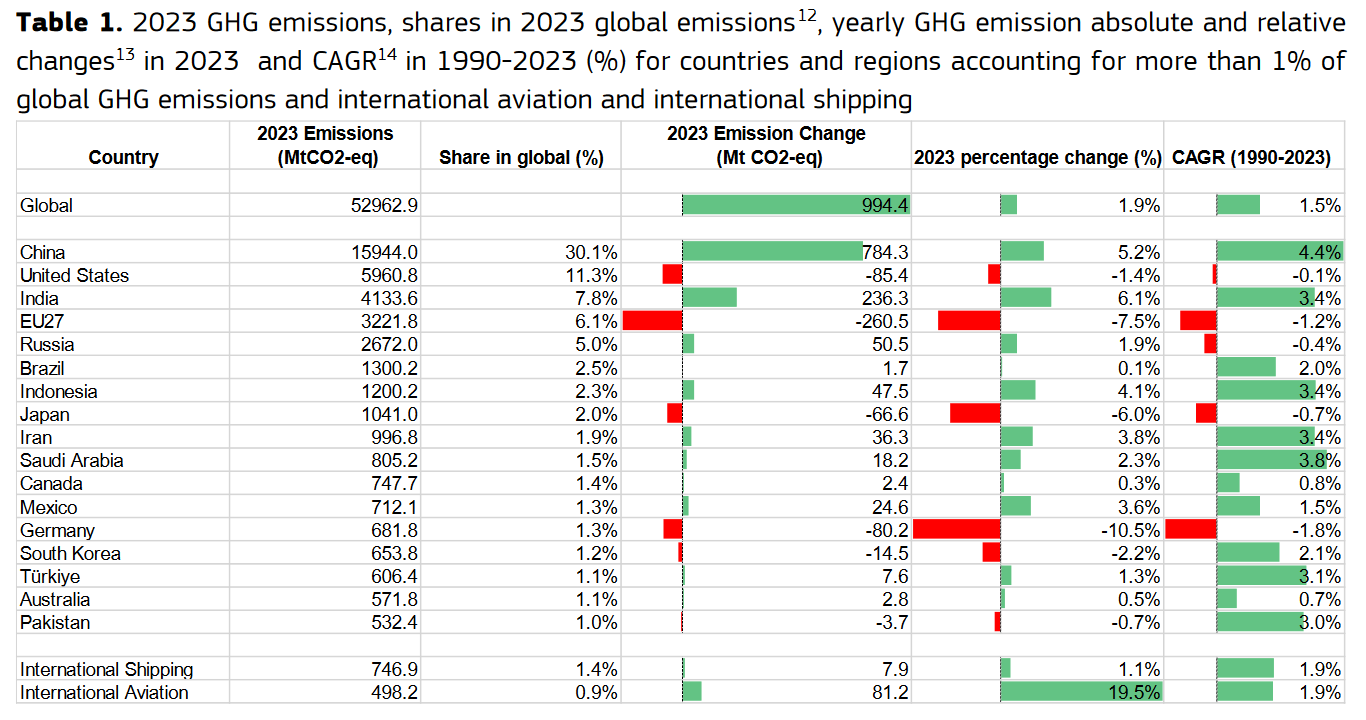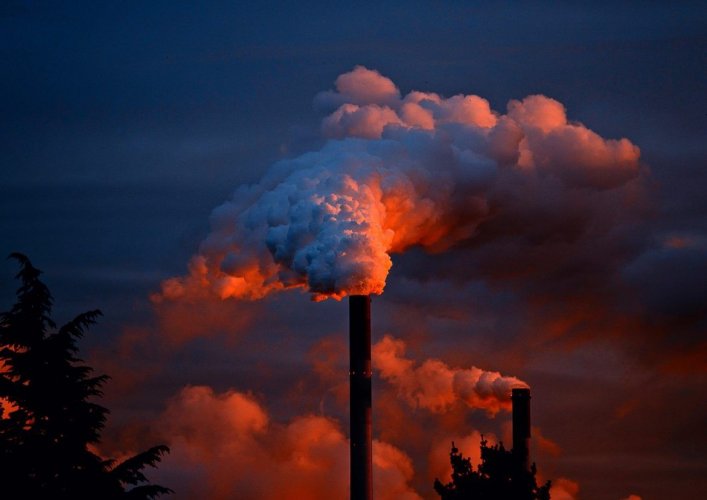Global greenhouse gas emissions will reach 53.0 Gt of CO2 equivalent in 2023, the highest level ever recorded.
These data are contained in the annual compilation of climate indicators published in early September by the JRC, the European Commission's Joint Research Centre.
The global figure rose by 1.9% or 994 million tonnes of CO2 eq. compared to 2022 levels.
The researchers found that with two exceptions – 2009 (global financial crisis) and 2020 (COVID-19) – global greenhouse gas emissions have been rising steadily since the beginning of the 21st century. This is mainly due to the increase in fossil CO2 emissions by China, India and other emerging economies.
In 2023, the majority of greenhouse gas emissions consisted of fossil CO2, which accounted for 73.7% of total emissions, while CH4 accounted for 18.9%, N2O 4.7% and F-gases 2.7%.
Compared to 1990, global fossil CO2 emissions have increased by 72.1%. The growth of CH4 and N2O emissions was somewhat slower: CH4 increased by 28.2% and N2O by 32.4% from 1990 to 2023, while fluoride gas emissions quadrupled over the same period (+294% ).
China, US, India, EU27, Russia and Brazil were the world's largest emitters of greenhouse gases in 2023:

Source: JRC
Together they account for 49.8% of the world's population, 63.2% of the world's gross domestic product, 64.2% of the world's fossil fuel consumption and 62.7% of the world's greenhouse gas emissions.
Among these largest emitters, China, India, Russia and Brazil increased their emissions in 2023 compared to 2022, with India having the largest increase in relative terms (+6.1%) and China having the largest absolute increase at 784 million tCO2 eq.
In 2023, greenhouse gas emissions in the EU27 were 33.9% lower than in 1990, reaching 3.22 GtCO2e. In 2023, emissions in the EU27 fell by 7.5% (-261 million tCO2e), and the EU27's share of global emissions decreased from 6.8% in 2022 to 6.1% in 2023.
6 of the 17 countries and regions accounting for more than 1% of global greenhouse gas emissions reduced their greenhouse gas emissions in 2023 (namely the US, EU27, Japan, South Korea, Germany and Pakistan), while others increased your emissions.

Source: JRC
Emissions from international aviation and shipping, which accounted for 0.9% and 1.4% of global greenhouse gas emissions in 2023, rose 19.5% and 1.1%, respectively, from 2022. However, aviation is still resuming after a significant reduction caused by the COVID crisis.
Earlier, EcoPolitic presented the top 10 countries that in 2023 thrown away the largest amount of CO2 in electricity production.





